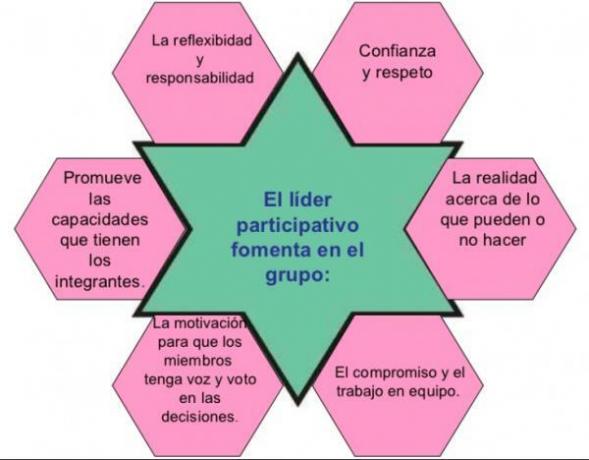Proximity:
"Out of sight, out of mind".
Factors that influence that people coincide with each other:
- Social and institutional factors.
- Personal characteristics of the individual (2 music-loving people are more likely to coincide at a concert).
Influence of physical proximity on attraction:
The people who are physically closest to you are generally the most accessible. In our society, we have been taught that it can be inappropriate, or even dangerous, to deal with strangers. Proximity can increase familiarity and, in turn, familiarity can increase attraction. This effect was called by Zajonc: "Effect of mere exposure": The repeated perception of a Stimulus that is initially neutral or positive (not negative), leads to a greater attraction to the stimulus.
The similarity.
According to cognitive consistency theories, spending a lot of time with someone who is unpleasant is an unbalanced relationship (there is no coherence between the two cognitions). Balance is restored: Changing our destination or work.
Finding out that said person is not as unpleasant as we thought.
- Proximity does not always have a positive influence on attraction (The effect of mere exposure does not occur if the stimulus is negative).
Physical characteristics:
A person with a pleasant physical appearance is more attractive.
The physical characteristics of the people that we perceive are especially important in the first encounters, or when the first contact is superficial.
- Rodin: When we meet strangers, the first process that occurs is to decide whether or not that person is of interest to us. If she does not have it, she will be ignored: It is the process of cognitive ignorance.
What makes a person physically attractive?: Controversy about "average attractiveness": Some suggest that what makes these faces attractive is that they are familiar to us.
Explanations of why a nice physique is attractive:In our society, there are beliefs about what characteristics of people are associated with each other (implicit theories of personality). "What is beautiful is good." Halo effect: Tendency to assume that those who have a good quality will also have other good qualities.
- Sometimes, attractiveness is associated with negative characteristics (Very attractive women: vain and materialistic).
- Sigelman et al: They found that while attractive male politicians were more highly valued than less attractive, it was the other way around for women.
When we associate with an attractive person, our public image is favored.
It could be that attractive people behave in a way that increases their evaluation and make them really more attractive (true in the case of men and in their relationships with people of the other sex).
- Other socially valued personal characteristics:
Any attribute that can be applied to a person can be evaluated according to the greater or lesser degree of attractiveness of that person.
Anderson: The 5 most valued traits (sincere, honest, understanding, loyal and worthy) and least valued (liar, false, mean, cruel and dishonest) by students among 555 adjectives.
Moya: He asked that various personality characteristics be evaluated:
Best rated: understanding, loyalty, ability to capture the feelings of others, sincerity and joy.
Less valued: Violence, narcissism, capricious behavior, aggressiveness and dominance.
Other studies have shown that the most valued traits in people are grouped into two sets:
Affection: Traits (affectionate, happy, considerate).
Important non-verbal cues (smile, look carefully, express emotions).
Attitudinal dispositions (showing liking for people or things).
Competence: Social skills.
Intelligence.
Competence (have an interesting conversation, know what you are talking about).
The value of a positive characteristic usually increases when it refers to a quality that can benefit us. The opposite process occurs with negative traits: are more negative when they refer to interpersonal relationships.
Other attributes are important in assessing attractiveness. They can be summarized as: their ability to inform us of the power, prestige or social position of the person we perceive.
Likeness:
In general, as resemblance to people increases, attraction increases.
Similar people in ethnicity, geography, religion, cultural level, social class, and age tend to be attracted to each other. The explanations are diverse (greater accessibility, social pressures, etc).
The two dimensions of similarity that have been most studied by social psychologists are:
- Attitudinal similarity.
- Personality resemblance.
Attitudinal similarity: Newcom showed the important impact that having similar attitudes had on attraction.
The results of the studies indicate that the greater the similarity, the greater the attraction, in all ages and in different countries.
Personality resemblance: The results are less consistent:
Sometimes the lack of relationship between personality similarity and attraction can be explained by the inconspicuous nature of the personality trait in question.
Other times, it may be that the very nature of the personality characteristic causes the attraction of both those who are similar and those who are not. (Dominant male).
In general, when the personality dimension is clearly manifested, the similarity produces greater attraction than the difference, at least in the case of the following characteristics:
- Orientation or sexual role (male / female or androgynous).
- Depression
- Type A behavior.
- Search for sensations.
- Cognitive style.
Reasons why similarity produces attraction:
In the case of attitudes, according to the theory of cognitive consistency, being similar to someone and not being attracted to that person is a relationship of imbalance. (Balance occurs when someone is similar and we like them, or when they are different and we don't like them).
Similarity is often reinforcing (the greatest proof that our ideas are correct and interesting is the fact that other people have the same ideas), but not always.
Exceptions:
People with cancer prefer to be with healthy people.
When another person is similar but has some additional negative characteristic or is of inferior status.
Sometimes the difference can be more reinforcing than the similarity (by interacting with people with different attitudes, we can learn new things).
The choice of similar people in certain dimensions (educational level, social class, physical attractiveness), can be the result of a process of comparison and evaluation of the various alternatives we have and their costs and Benefits.
According to expectation-value theories. We seek objectives in which their value and the possibility of achieving them are balanced.
Matching hypothesis: Members of heterosexual couples are usually balanced in terms of physical attractiveness.
Expectation value theories suggest that, in real life, we will be drawn to the most valued person within the range of people who may reciprocate us.
Up to this point, All the factors that we have seen can operate without interaction.
Reciprocity: In this factor, the interaction mediates.
The existence of reciprocity or not in the relationship is one of the factors that influence its development.
- Gold et alWhen a woman responded positively to a man, he tended to be attracted to her. (It is not exclusive to romantic relationships, it also appears in friendships and professional relationships).
- Curtis and Miller: They designed an experiment in which the participants sandwiched with a stranger. They were previously informed that the stranger had a positive or negative conception of the participants.
Results:
When they interacted, those who believed they were interacting with someone who liked them, the tone was more affectionate and they were more open, and vice versa.
It is a new demonstration of self-fulfilling prophecy. Those who believed that they liked each other behaved in such a way that the stranger (oblivious to all the manipulations of the experimenter) ended up really liking them.
The results can be explained by:
Reinforcement mechanisms: If someone has a bad image of us, it is not rewarding.
Cognitive consistency theories: For someone to like me and for someone to like me, is a situation of imbalance


